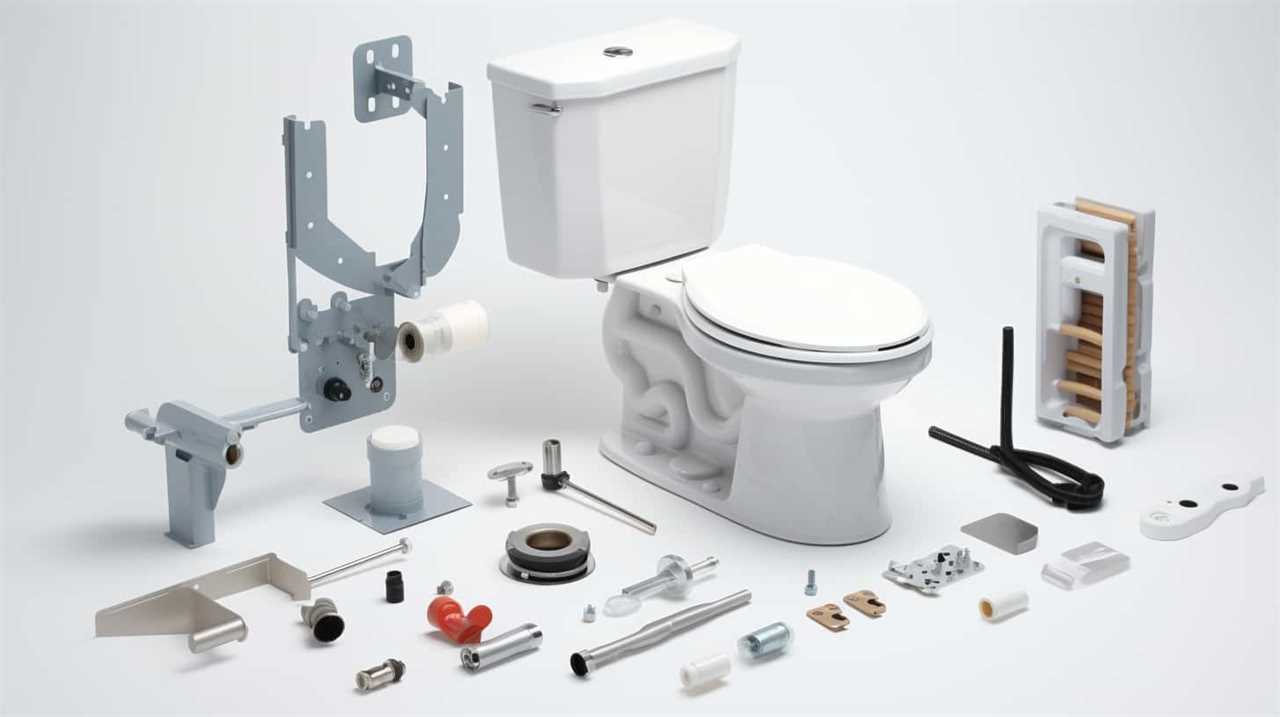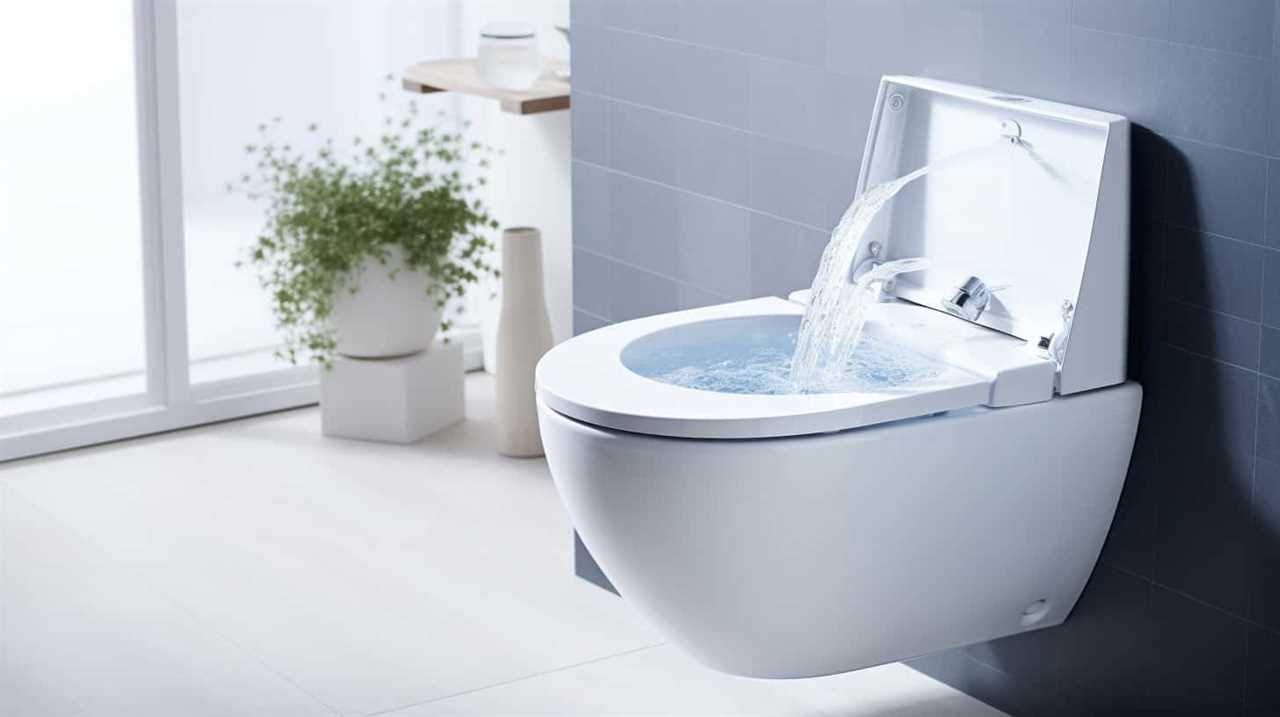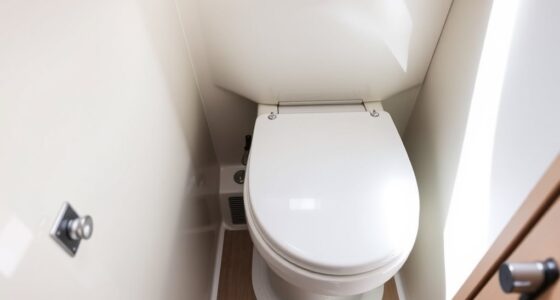Did you know that something as seemingly harmless as flushing Kleenex down the toilet could potentially clog your septic tank?
In this article, we will delve into the composition of Kleenex, how septic tanks work, and the risks associated with flushing Kleenex.
We will also explore proper disposal methods and alternative hygiene products to consider.
Join us as we uncover the facts and provide you with the knowledge to make informed decisions about your septic system.

Key Takeaways
- Kleenex is primarily made from virgin fiber derived from trees, but there are options in the market that use recycled fiber or are compostable.
- Flushing Kleenex down the toilet can easily clump together and create blockages in the septic system, as the fibers are not easily broken down by septic tank bacteria.
- Proper disposal methods for Kleenex are necessary to prevent costly repairs and maintenance to the septic tank system.
- Recycling Kleenex is a sustainable option in some municipalities, and it helps reduce waste and contribute to sustainability.
Understanding the Composition of Kleenex
Understanding the composition of Kleenex involves examining the materials used in its production. Kleenex, a popular brand of tissue, is made primarily from virgin fiber, which is derived from trees. However, there are also options available in the market that use recycled fiber. This is an important consideration for those who are concerned about the environmental impact of their tissue consumption.
In recent years, there’s been a growing demand for compostable tissues, which are made from materials that can break down naturally and contribute to soil health. These tissues are designed to minimize environmental harm and reduce waste.
How Septic Tanks Work
To better understand the potential impact of Kleenex on septic tanks, let’s delve into how these tanks work.
Septic tanks are an essential component of a septic system, which is used to treat and dispose of household wastewater. They work by separating solid waste from the liquid waste. When wastewater enters the tank, it undergoes a natural process of decomposition, where bacteria break down the organic matter.

The solid waste settles at the bottom of the tank, forming sludge, while the liquid waste, called effluent, floats to the top. The effluent then flows out of the tank and into a drain field, where it’s further treated and filtered by the soil.
To ensure the proper functioning of a septic tank, regular maintenance is crucial. This includes regular pumping of the tank to remove accumulated sludge and the use of septic tank additives to enhance the natural decomposition process.
Potential Risks of Flushing Kleenex
Moving on to the potential risks of flushing Kleenex, we need to consider the impact it can have on the proper functioning of a septic tank. Flushing Kleenex down the toilet can pose several risks that may lead to costly repairs and maintenance.
- Kleenex is designed to be absorbent and durable, which means it can easily clump together and create blockages in the septic system.
- The fibers in Kleenex aren’t easily broken down by the bacteria in the septic tank, leading to accumulation and potential clogging.
- Flushing Kleenex can disrupt the balance of bacteria in the septic tank, reducing its effectiveness in breaking down waste.
These risks highlight the importance of proper disposal methods for Kleenex, which we’ll discuss in the next section. It’s crucial to understand these risks and take appropriate actions to prevent any damage to your septic tank system.

Proper Disposal Methods for Kleenex
To properly dispose of Kleenex, we need to follow specific guidelines to prevent any potential damage to our septic tank system. Flushing Kleenex down the toilet may seem convenient, but it can have detrimental effects on our septic system and the environment. Kleenex is designed to be absorbent and doesn’t break down easily like toilet paper. This can lead to clogs in pipes and septic tanks, causing costly repairs and potential contamination of groundwater.
Instead, we should consider recycling options for Kleenex. Some municipalities accept tissue products in their recycling programs, while others offer separate programs specifically for paper products like Kleenex. By recycling our used Kleenex, we can reduce waste and contribute to a more sustainable future.
Other Alternatives to Consider for Hygiene Products
We can explore various alternatives for hygiene products. When it comes to being eco-friendly and reducing waste, there are several options to consider. Reusable products are a great choice as they not only reduce the amount of waste going into landfills but also save you money in the long run.
Here are some eco-friendly alternatives to traditional hygiene products:

- Cloth wipes: These can be used instead of disposable wipes for cleaning purposes. They’re reusable and can be easily washed and reused.
- Menstrual cups: These are a sustainable alternative to disposable pads and tampons. They can be reused for several years, reducing waste significantly.
- Bamboo toothbrushes: Switching to a bamboo toothbrush eliminates the need for plastic toothbrushes that take hundreds of years to decompose.
Frequently Asked Questions
Can Kleenex Be Safely Flushed Down the Toilet?
Kleenex should not be flushed down the toilet as it can clog septic tanks. Proper Kleenex disposal methods include throwing them in the trash. Flushing Kleenex has negative environmental impacts.
How Long Does It Take for Kleenex to Break Down in a Septic Tank?
In analyzing the breakdown time of septic safe Kleenex, we found that it takes a reasonable amount of time for the tissue to fully break down in a septic tank, ensuring its compatibility with the system.
Can Flushing Kleenex Cause Clogs in the Plumbing System?
Flushing Kleenex can cause clogs in the plumbing system. Tissues should not be used as toilet paper as they are not designed to break down easily. Regular tissues are not septic safe.
Are There Any Specific Types of Kleenex That Are Septic-Safe?
There are septic-safe alternatives to Kleenex, but not all types are suitable. Flushing Kleenex can have a negative environmental impact. It’s important to consider the materials used and their effect on septic systems.

What Are the Consequences of Flushing Kleenex in Areas Without Septic Systems?
Flushing Kleenex in municipal sewage systems can have negative consequences. It can lead to clogs in the pipes, causing backups and costly repairs. Additionally, the environmental impact of Kleenex disposal should be considered.
Conclusion
In conclusion, while Kleenex is made of biodegradable materials that may break down in septic tanks, it’s still recommended to avoid flushing them as they can contribute to clogs and blockages.
Interestingly, a study found that flushing just one tissue can take up to 7 hours for it to fully dissolve in water, creating a vivid image of the potential accumulation and damage that can occur in septic systems.
Proper disposal methods, such as throwing used tissues in the trash, should be followed to avoid any septic tank issues.











